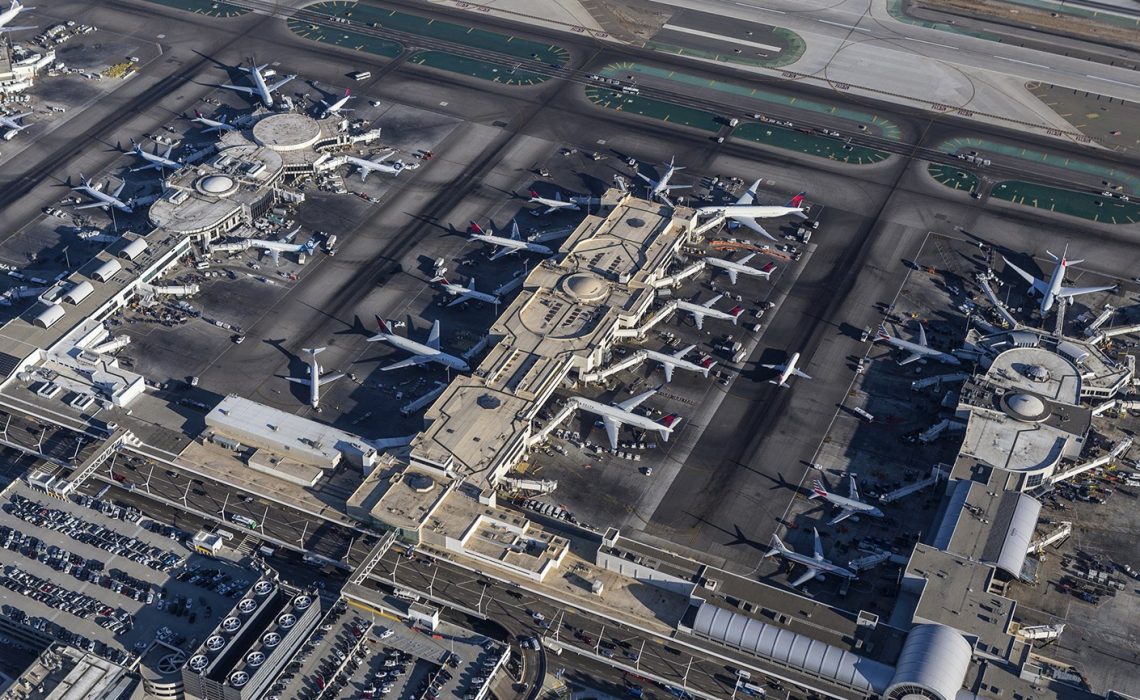
You might also like:
Between May 12 and 17, 16 airlines will be shuffled among gates at Los Angeles Airport (LAX) to set the stage for Delta’s planned $1.9 billion renovation of terminals 2 and 3 and the construction of the Delta Sky Way, which will connect those terminals to the Tom Bradley International Terminal.
Mary Grady, LAX’s managing director of media and public relations, said the moves will be “a finely choreographed event” that the airport has been planning for more than a year.
Still, she urged flyers to make sure they are prepared before heading to LAX, both during and after the relocations.
“We’ve done a lot of planning. Now passengers need to plan,” Grady said. “We can only do so much. They need to check with their airlines.”
By far the largest player in the move will be Delta, which is moving out of 16 gates in LAX terminals 5 and 6 and moving into 23 gates in terminals 1 and 2.
Other airlines making gate changes include Air Canada, Allegiant, Frontier, Hawaiian, JetBlue, Southwest, Spirit and Virgin America, as well as several more domestic and international carriers.
For Delta, the changes will offer some immediate convenience for customers. The carrier will be operating only seven or eight flights per day out of each gate instead of 10 per day, according to Delta spokeswoman Liz Savadelis.
That should mean less congested gates and more operational leeway for the airline. In addition, the moves will put Delta’s LAX gates closer to partners Aeromexico, Virgin Atlantic and WestJet.
Some other airlines will also benefit. Virgin America will move from Terminal 3 to Terminal 6, the location of Alaska Airlines, which recently acquired Virgin America.
Logistically, Grady said, the moving process will be complicated. Computers and ticketing counters must be relocated. Planes must be towed. Baggage handling, wheelchair services and sky cap services all must be coordinated. And it all must be done between the end of each airline’s operations on moving night and its first flight the next morning.
One of the biggest challenges will be retooling the LAX signs.
Approximately 1,000 signs must be changed, replaced, moved or added as part of the gate-change process, Grady said. Those include wayfinding signs in the terminals, signs on the roadways leading to the airport, new signs alerting people to the moves and curbside terminal signs.
Grady said that ahead of the moves, LAX has already layered overhead drive signs so that the old marker can be peeled off overnight to reveal the new marker.
Most airlines will be making the gate move on one of the nights between May 12 and May 17, but Delta will be moving over a series of three nights, during which time the airline will be running operations out of four LAX terminals.
Savadelis suggested that Delta flyers check their flight status prior to going to the airport and that they arrive three to four hours prior to their scheduled departure.
To help ease the process for all passengers, LAX will have staffers in green vests in nonsecured portions of the airport to direct people to their gates. The airline will deploy green shuttle buses for three weeks during and after the moves to transport disoriented flyers between terminals 5 and 6 and terminals 2 and 3.
Once it has relocated to terminals 2 and 3, Delta will commence work on a seven-year project to improve those terminals and build the skyway to the Bradley International Terminal. The bulk of the work will be on Terminal 3.
LAX has already completed its own $332 million, Terminal 2 upgrade that has affected everything from its ticket lobbies and baggage claim areas to its retail and dining outlets.
The Delta Sky Way project will augment the city of Los Angeles’ $14 billion capital improvement program at LAX that has been ongoing since 2008. The airport, which now has nine terminals, has thus far completed renovations at terminals 2, 5 and 6. Currently, work is underway at terminals 1, 7 and 8.
In addition, the 18-gate, $1.9 billion Bradley International Terminal opened in September 2013, and the $148 million Terminal 4 Connector, tying Bradley to terminals 4, 5, 6, 7 and 8, opened last September.
LAX recently broke ground on the $1.6 billion Midfield Satellite Terminal, which will serve as a 12-gate extension to the Bradley terminal and connect to it via a tunnel.
Expected to commence next year is LAX’s $5.5 billion project to improve roadways, parking and transit options at the airport, which last year served nearly 81 million passengers.
Known as the Landside Access Modernization Program, it will include a 2 1/4-mile, six-station people mover, a consolidated rental car facility and an airport stop for the Los Angeles Metro system. It will also include an intermodal transportation facility on the airport perimeter that will offer parking, hotel shuttles, passenger drop-off locations and easy access to the people mover, all outside the congested central terminal area.
The airport expects those additions to reduce traffic through the terminal ring road by 40%, Grady said. First to be completed will be the people mover and the rental car facility, with an estimated completion date of 2023.
Joel Kotkin, an urban studies professor at Chapman University in Orange County, said the renovations are much needed at LAX and could help Los Angeles defend its economic influence against challenges from West Coast tech centers Seattle and, especially, San Francisco.
“Airports are basically the train stations of the 21st century,” Kotkin said.
Sоurсе: travelweekly.com
